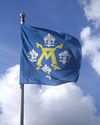 Turku,
Finland
Turku,
Finland 
 Turku,
Finland
Turku,
Finland 
Turku,founded in the 13th century, is the oldest and fifth largest city in Finland, with a population of 175,354 (as of 2006). Located at the mouth of the Aura river in the southwest of the country, it is the capital city of both the region of Finland Proper and the province of Western Finland, as well as being the centre of the country's third largest urban area, with around 300,000 inhabitants.Turku has one of the largest Finland-Swedish populations in the country. Due to its location, the Port of Turku is one of the busiest seaports in Finland with around 3.7 million passengers per year.
 |
| Turku castle, one of the largest surviving medieval castles in Scandinavia |
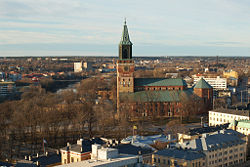 |
| Cathdral of Turku from the old observatory |
20th-century Turku has been called "Finland's gateway to the West" by historians such as Jarmo Virmavirta. The city enjoyed good connections with other Western European countries and cities, especially since the 1940s with Stockholm across the Gulf of Bothnia.
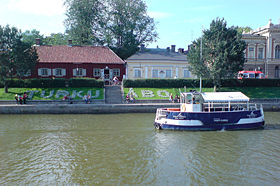 |
| Aura river |
Located at the mouth of the Aura river in the southwestern corner of Finland, Turku covers an area of 245 (sq km).of land, spread over both sides of the river. The eastern side, where the Cathedral of Turku is located, is popularly referred to as täl pual jokke ('this side of the river'), while the western side is referred to as tois pual jokke ('the other side of the river'). The city centre is located close to the river mouth, on both sides of the river, though development has recently been expanding westward.

Lying by the Baltic Sea and sheltered by the islands of the Archipelago Sea,
Turku has a hemiboreal climate. Like much of southern Finland, the city experiences
warm summers, with temperatures ranging up to 30°C (86°F), and relatively cold
winters with frequent snowfall. The warmest month of the year is July, with
an average temperature of 17°C (62°F), while the coldest is January. The average
year-round temperature is 5°C (41°F). Precipitation in Turku averages 633 mm
(25 inches) a year. The rainiest month of the year is August, when the city
receives on average 85 mm (3.4 inches) of rainfall. In March, the driest month
of the year, the figure is only 29 mm (1.1 inches). The average air pressure
at sea level is 1012 millibars, with little variance throughout the year. Operational
since 1955, the city's weather station is located at an altitude of 47 metres
(154 feet) at Turku Airport.
 For a city of its size, Turku has a good public transportation network of bus
routes. It is managed and supervised by the City of Turku Public Transport Office,
and is operated mainly by private companies. All the major districts are served
by buses every ten to fifteen minutes during the day, some even more frequently.
Regional buses are operated by private companies, with very frequent services
especially to the neighbouring cities of
Naantali, Raisio, and Kaarina. Rail traffic to and from Turku is handled
by the Finnish national carrier, VR. As with most other Finnish cities, railways
were an important method of transportation in the first half of the 20th century,
but have since seen a sharp fall in popularity. As a result, the number of services
has fallen and only the railways towards Tampere and Helsinki are now in use.
The railway stations currently used for passenger traffic are the Turku Central
railway station in Pohjola, and two smaller stations in Kupittaa and the Port
of Turku. There is no local rail traffic at the moment, as the city's tram services
were discontinued in 1972, and the various local railway lines to neighbouring
towns and municipalities were all abolished during the late 20th century. However,
there are plans for a light rail line in the Turku region in the near future.
This system would more ably serve major suburbs of the city such as Varissuo
and Runosmäki, as well as the neighbouring cities. Turku
Airport is located eight kilometres to the north of the city centre,
partly in the neighbouring municipality of Rusko. There are also daily ferry
services from the Port of Turku to Sweden and Åland, operated by Silja Line,
Viking Line and SeaWind Line. These are somewhat of a Finnish cultural tradition
, and people often travel long distances across Finland to Turku just to take
a cruise across the Gulf of Bothnia. The archipelago sea boat traffic is handled
by S/S Ukkopekka. Old steamship cruise Turku-Naantali(One
of the tourist center in Finland)-Turku.
For a city of its size, Turku has a good public transportation network of bus
routes. It is managed and supervised by the City of Turku Public Transport Office,
and is operated mainly by private companies. All the major districts are served
by buses every ten to fifteen minutes during the day, some even more frequently.
Regional buses are operated by private companies, with very frequent services
especially to the neighbouring cities of
Naantali, Raisio, and Kaarina. Rail traffic to and from Turku is handled
by the Finnish national carrier, VR. As with most other Finnish cities, railways
were an important method of transportation in the first half of the 20th century,
but have since seen a sharp fall in popularity. As a result, the number of services
has fallen and only the railways towards Tampere and Helsinki are now in use.
The railway stations currently used for passenger traffic are the Turku Central
railway station in Pohjola, and two smaller stations in Kupittaa and the Port
of Turku. There is no local rail traffic at the moment, as the city's tram services
were discontinued in 1972, and the various local railway lines to neighbouring
towns and municipalities were all abolished during the late 20th century. However,
there are plans for a light rail line in the Turku region in the near future.
This system would more ably serve major suburbs of the city such as Varissuo
and Runosmäki, as well as the neighbouring cities. Turku
Airport is located eight kilometres to the north of the city centre,
partly in the neighbouring municipality of Rusko. There are also daily ferry
services from the Port of Turku to Sweden and Åland, operated by Silja Line,
Viking Line and SeaWind Line. These are somewhat of a Finnish cultural tradition
, and people often travel long distances across Finland to Turku just to take
a cruise across the Gulf of Bothnia. The archipelago sea boat traffic is handled
by S/S Ukkopekka. Old steamship cruise Turku-Naantali(One
of the tourist center in Finland)-Turku.
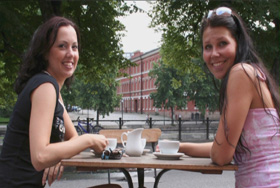
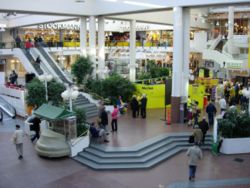 |
| Hansatori Shopping Center |
Turku is the central economic hub of southwestern Finland, and the capital of the Turku economic district. As of 2003, the district's per capita income was €24,022, higher than the national average of €23,780. The city's economy is centred around the Port of Turku and other service-oriented industries. 86 per cent of the city's workforce are employed in the services sector. The city is also a renowned high-tech centre — the Turku Science Park area in Kupittaa hosts over 300 companies from the fields of biotechnology and information technology, as well as several institutions of higher learning that work in closely with the business sector. One of the examples of high information technology in Turku area is OpenSpark a Finlands largest WiFi community which Turku is also using. This cooperative element is seen as a particularly important factor with regards to the city's expected future economic development, as outlined in the Turku Strategy that is published annually by the city council. Turku, with its good transportation network and close proximity to the Archipelago Sea, is also an important centre for tourism, frequently hosting various conventions and exhibitions. The city collects an 18 per cent income tax (council tax) from its inhabitants, in addition to the progressively graduated taxation practised by the Finnish state. The total amount received through council tax in 2004 was projected at €400 million, a reduction of 1.0 per cent from the previous year. Taxes collected from corporations amounted to €39 million in 2004.
 |
| Medieval Market of Turku is an annual event organised in the historic city centre. |
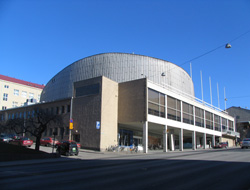 |
| The Turku Concert Hall, designed by architect Risto-Veikko Luukkonen, completed in 1952 |
Cultural venues in Turku include several theatres, cinemas, and art galleries, and a city philharmonic orchestra. The city's cultural centre organises a number of regular events, most notably the Medieval Market in July each year. Turku is also the official Christmas city of Finland, and 'Christmas Peace' in Finland is declared on every 24 December at the Cathedral of Turku. The Turku Music Festival and the rock festival Ruisrock (held on the island of Ruissalo) are among the oldest of its kind in Scandinavia. The city also hosts another rock festival, Down by the Laituri, and boasts a vibrant nightlife.
There are also numerous museums, such as the Turku Art Museum and the Wäinö Aaltonen Museum of Art. The Äbo Akademi University maintains the Jean Sibelius museum, which is the only museum in Finland specialising in the field of music. Apart from these, there are also several historical museums that display the city's medieval period, such as the Turku Castle, which has been a functional historical museum since 1881, and the Aboa Vetus museum, built in the late 1990s over the 14th century archaeological site. The Luostarinmäki handicrafts museum, converted from residential buildings that survived the Great Fire of Turku in 1827, was the first Scandinavian venue to receive the "Golden Apple" tourism award.
Turku is a candidate city for European Capital of Culture in 2011, and the city council has approved numerous projects to boost the city's image in preparation for that status.
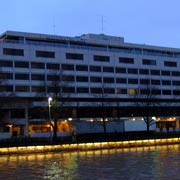

 Gothenburg, Sweden, since 1946
Gothenburg, Sweden, since 1946
 Bergen, Norway, since 1946
Bergen, Norway, since 1946
 Saint Petersburg, Russia, since 1953
Saint Petersburg, Russia, since 1953
 Gdańsk, Poland, since 1958
Gdańsk, Poland, since 1958
 Rostock, Germany (at the time German Democratic Republic), since 1963
Rostock, Germany (at the time German Democratic Republic), since 1963
 Varna, Bulgaria, since 1963
Varna, Bulgaria, since 1963
 Constanța, Romania, since 1963
Constanța, Romania, since 1963
 Cologne, Germany (at the time Federal Republic of Germany), since 1967
Cologne, Germany (at the time Federal Republic of Germany), since 1967
 Szeged, Hungary, since 1971
Szeged, Hungary, since 1971
 Bratislava, Slovakia, since 1976
Bratislava, Slovakia, since 1976
 Florence, Italy, since 1992
Florence, Italy, since 1992
 Tianjin, China, since 2000
Tianjin, China, since 2000
 Tartu, Estonia (co-operation agreement)
Tartu, Estonia (co-operation agreement)
 Tallinn, Estonia (co-operation agreement)
Tallinn, Estonia (co-operation agreement)
 Kuressaare, Estonia (co-operation agreement)
Kuressaare, Estonia (co-operation agreement)